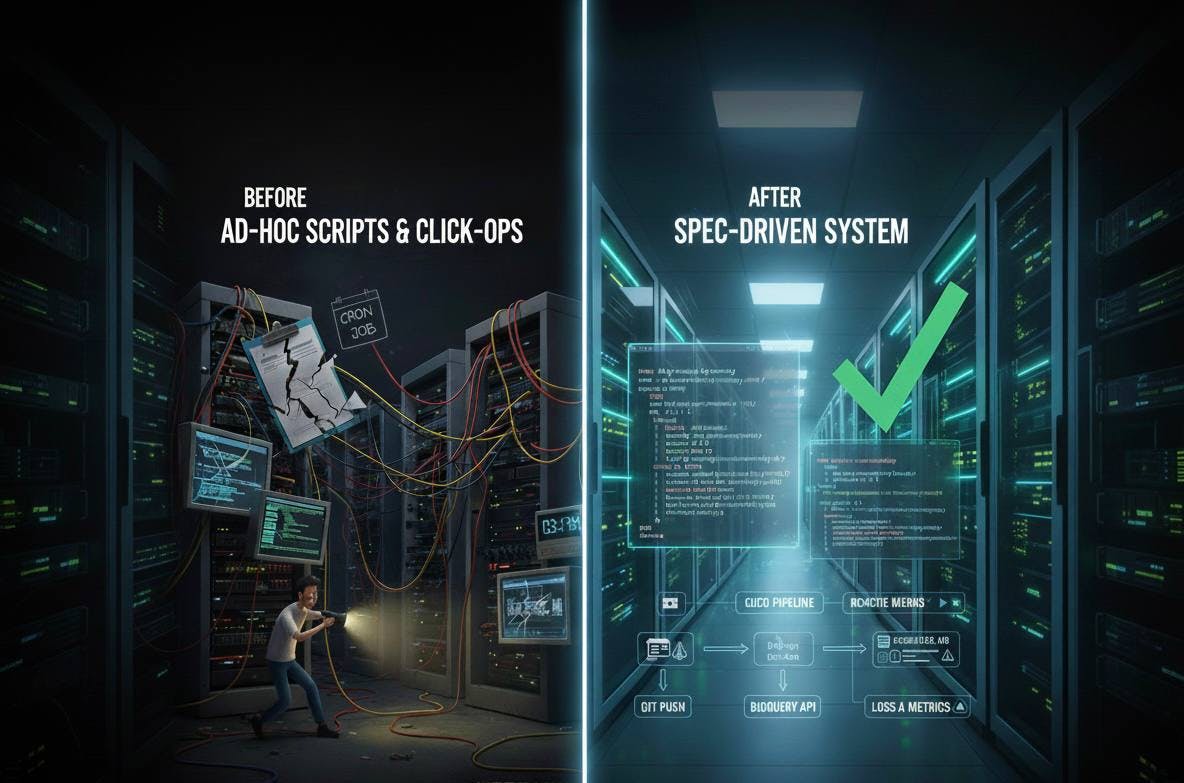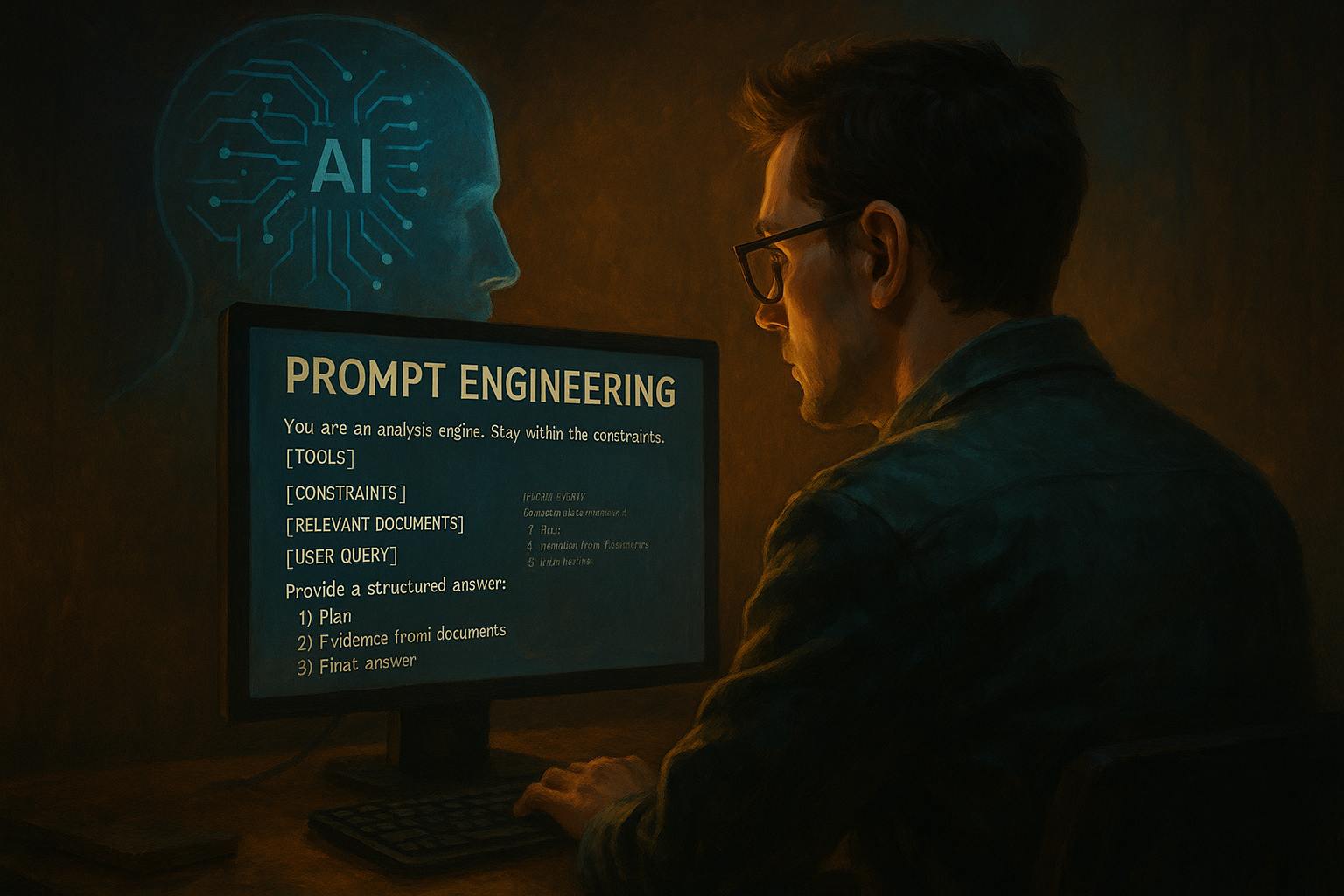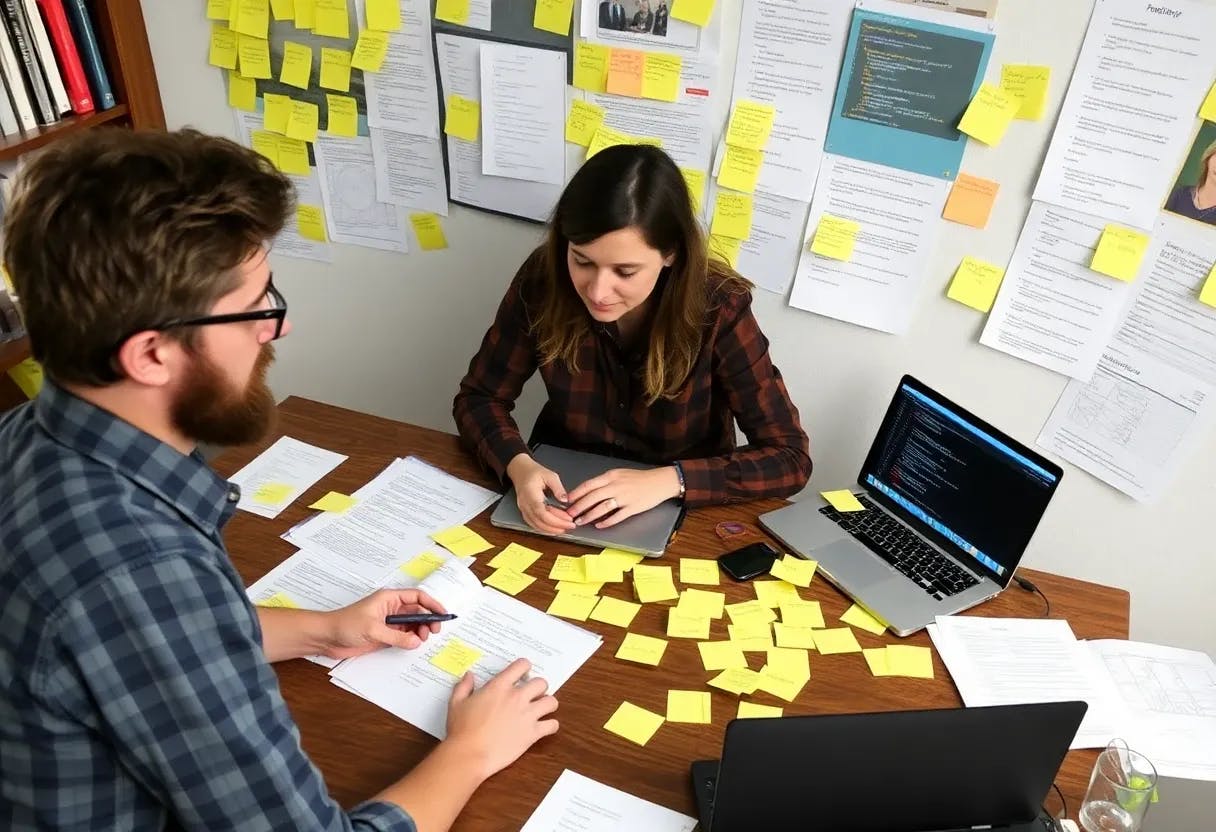Table of links
Abstract
1 Introduction
2 Is an ethnographic study the right choice?
- The context of your research
- The kind of research questions you want to answer
- What ethnographic studies require from the researcher
3 Planning an ethnographic study
- Finding a site for field work
- Participant or non-participant observation
- Duration of field work
- Space and Location
- Theoretical underpinning
4 Implementing your ethnographic study
- Gaining access and starting up
- Handling your preconceptions
- During the study
- Going Native
- Leaving the field
5 From Data to Text
- Reflective and inductive analysis
- Writing Ethnography for Software Engineering Audiences – Reporting the Results
6 Ethnography and Research Ethics
7 Final comments, Further reading and References
7 Final comments, Further reading, and References
At the start of this chapter, we provided a simple answer as to why ethnography is different to other qualitative methods. Having read through the chapter and hopefully completed the exercises along the way, we hope that you have a clearer and more holistic answer to this question. Ethnography is characterised by focusing on the members’ point of view and understanding why things are the way they are. Understanding current practice helps to inform decisions about future practice, processes and tools. But it’s not the specific practice that is relevant; it’s the significance of that practice. Ethnography is good at answering “how” and “why” questions and makes certain demands of the researcher, such as focusing on everyday detail and writing thick descriptions. It has been used to address research questions in four contexts: investigations of social and human aspects, to inform tool design, to inform process change and to complement other research methods. So we invite you to consider this question again, this time for yourselves:
-
What are the key differences between ethnography and:
a. Grounded theory
b. Action research
c. Case study
-
How might an ethnographic study complement a research programme that involves: a. Experiments b. Survey c. Systematic literature review
The following are suggestions for further reading on this topic:
Fetterman, D.M.: Ethnography: Step-by-step. Sage publications (2020)
This is a very practical book about ethnography and although written with a social science audience in mind, it is accessible to readers from a wide range of backgrounds.
Hammersley, M., Atkinson, P.: Ethnography: Principles in practice. Routledge (2019)
This article is written from a social sciences perspective, and aims to take an objective view of ethnography and its limitations. It deepens and problematizes some of the issues raised in this chapter and introduces some others
Pink, S., Horst, H., Postill, J., Hjorth, L., Lewis, T., Tacchi, J.: Digital Ethnography: Principles and Practice. SAGE Publications Ltd, United Kingdom (2016)
This text provides an introduction to digital ethnography and how different media and technologies affect the ethnographic research endeavour, both through their effects on the world being studied and the opportunities that technology provides for the researcher.
Randall, D.W., Harper, R.H.R., Rouncefield, M.: field work for Design – Theory and Practice. Computer Supported Cooperative Work. Springer (2007)
The book presents a social science perspective on ethnography in the context of Computer Supported Cooperative work. It explains ethnography and how it can be brought to bear on design of software to support cooperation. Though this is different from using ethnography in software engineering, it supports the possibility to use ethnography in different disciplinary contexts and reflects on the challenges of doing so.
Zhang, H., Huang, X., Zhou, X., Huang, H., Babar, M.A.: Ethnographic research in software engineering: a critical review and checklist. In: Proceedings ESEC/FSE 2019, Tallinn, Estonia, August 26-30, 2019, pp. 659–670. ACM (2019). As research is progressing, new ethnographic studies are published continuously. This is one recent literature review:
Sharp, H., Dittrich, Y., de Souza, C.R.: The role of ethnographic studies in empirical software engineering. IEEE Transactions on Software Engineering 42(8), 786–804 (2016) This article is a companion to this chapter. It introduces the role of ethnography in empirical software engineering through a set of ethnographic studies that have been conducted with software engineering as their focus.
References
- Agar, M.: Independents declared: The dilemmas of independent trucking. Smithsonian Series in Ethnographic Inquiry (1986)
- Agar, M.H.: The professional stranger: An informal introduction to ethnography. Academic Press, San Diego (1996). DOI papers3: //publication/uuid/96F108B0-0BDC-4D1B-AAF2-BB963B9F08E9. URL http://www.citeulike.org/group/268/article/221525
- Begum, M.: On bug resolution: Artefacts, information flow and triage. Master’s thesis, IT University of Copenhagen (2020)
- Bentley, R., Hughes, J.A., Randall, D., Rodden, T., Sawyer, P., Shapiro, D., Sommerville, I.: Ethnographically-informed systems design for air traffic control. In: Proceedings of the 1992 ACM conference on Computer-supported cooperative work, pp. 123–129 (1992)
- Blomberg, J., Suchman, L., Trigg, R.H.: Reflections on a work-oriented design project. Human– Computer Interaction 11(3), 237–265 (1996)
- Capiluppi, A., Fernandez-Ramil, J., Higman, J., Sharp, H., Smith, N.: An empirical study of the evolution of an agile-developed software system. In: 29th International Conference on Software Engineering (ICSE’07), pp. 511–518. IEEE (2007)
- Cetina, K.K.: Objectual practice. In: The practice turn in contemporary theory. Routledge (2005) Teaching and Learning Ethnography for Software Engineering Contexts 35
- Clarke, V., Braun, V.: Thematic analysis: a practical guide. SAGE Publications Ltd (2022)
- De Souza, C.R., Redmiles, D., Mark, G., Penix, J., Sierhuis, M.: Management of interdependencies in collaborative software development. In: 2003 International Symposium on Empirical Software Engineering, 2003. ISESE 2003. Proceedings., pp. 294–303. IEEE (2003)
- De Souza, C.R., Redmiles, D.F.: The awareness network, to whom should i display my actions? and, whose actions should i monitor? IEEE Transactions on Software Engineering 37(3), 325– 340 (2011)
- Deshpande, A., Sharp, H., Barroca, L., Gregory, P.: Remote working and collaboration in agile teams. In: P.J. ˚Agerfalk, N. Levina, S.S. Kien (eds.) Proceedings of the International Conference on Information Systems – Digital Innovation at the Crossroads, ICIS 2016, Dublin, Ireland, December 11-14, 2016. Association for Information Systems (2016). URL http://aisel.aisnet.org/icis2016/ManagingIS/Presentations/12
- Dingsøyr, T., Bjørnson, F.O., Schrof, J., Sporsem, T.: A longitudinal explanatory case study of coordination in a very large development programme: the impact of transitioning from a first-to a second-generation large-scale agile development method. Empirical Software Engineering 28(1), 1 (2023)
- Dittrich, Y.: Doing Empirical Research on Software Development: Finding a Path between Understanding, Intervention, and Method Development, pp. 243–
- The MIT Press (2002). DOI 10.7551/mitpress/6308.003.0016. URL https://doi.org/10.7551/mitpress/6308.003.0016
- Dittrich, Y.: What does it mean to use a method? towards a practice theory for software engineering. Inf. Softw. Technol. 70, 220–231 (2016). DOI 10.1016/J.INFSOF.2015.07.001. URL https://doi.org/10.1016/j.infsof.2015.07.001
- Dittrich, Y., Lindeberg, O.: How use-oriented development can take place. Inf. Softw. Technol. 46(9), 603–617 (2004). DOI 10.1016/J.INFSOF.2003.11.002. URL https://doi.org/10.1016/j.infsof.2003.11.002
- Dittrich, Y., Michelsen, C.B., Tell, P., Lous, P., Ebdrup, A.: Exploring the evolution of software practices. In: P. Devanbu, M.B. Cohen, T. Zimmermann (eds.) ESEC/FSE ’20: 28th ACM Joint European Software Engineering Conference and Symposium on the Foundations of Software Engineering, Virtual Event, USA, November 8-13, 2020, pp. 493–504. ACM (2020). DOI 10.1145/3368089.3409766. URL https://doi.org/10.1145/3368089.3409766
- Dittrich, Y., Ronkk ¨ o, K., Eriksson, J., Hansson, C., Lindeberg, O.: Cooperativ ¨ e method development. Empir. Softw. Eng. 13(3), 231–260 (2008). DOI 10.1007/S10664-007-9057-1. URL https://doi.org/10.1007/s10664-007-9057-1
- Edwards, C.: Making paper strips digital (2017). URL https://nats.aero/blog/2017/08/making-paper-strips-digital/. Last accessed: 13. 06. 2024
- Engestrom, Y., et al.: Activity theory and individual and social tra ¨ nsformation. Perspectives on activity theory 19(38), 19–30 (1999)
- Fetterman, D.M.: Ethnography: Step-by-step. Sage publications (2010)
- Fetterman, D.M.: Ethnography: Step-by-step. Sage publications (2020)
- Gearing, R.E.: Bracketing in research: A typology. Qualitative Health Research 14(10), 1429–1452 (2004). DOI 10.1177/1049732304270394. URL https://doi.org/10.1177/1049732304270394. PMID: 15538009
- Giuffrida, R.: How social software supports communicative and coordinative practices in global software development. Ph.D. thesis, IT university of Copenhagen (2014)
- Giuffrida, R., Dittrich, Y.: How social software supports cooperative practices in a globally distributed software project. In: H. Sharp, R. Prikladnicki, A. Begel, C.R.B. de Souza (eds.) Proceedings of the 7th International Workshop on Cooperative and Human Aspects of Software Engineering, CHASE 2014, Hyderabad, India, June 2-3, 2014, pp. 24–31. ACM (2014). DOI 10.1145/2593702.2593716. URL https://doi.org/10.1145/2593702.2593716
- Giuffrida, R., Dittrich, Y.: A conceptual framework to study the role of communication through social software for coordination in globally-distributed software teams. Inf. Softw. Technol. 63, 11–30 (2015). DOI 10.1016/J.INFSOF.2015.02.013. URL https://doi.org/10.1016/j.infsof.2015.02.013 36 Yvonne Dittrich, Helen Sharp and Cleidson de Souza
- Hammersley, M., Atkinson, P.: Ethnography: Principles in practice. Routledge (2019)
- Heath, C., Luff, P.: Collaborative activity and technological design: Task coordination in london underground control rooms. In: L.J. Bannon, M. Robinson, K. Schmidt (eds.) Proceedings of the Second European Conference on Computer Supported Cooperative Work, 24-27 September 1991, Amsterdam, The Netherlands, pp. 65–80. Kluwer (1991). DOI 10.1007/ 978-94-011-3506-1 5. URL https://doi.org/10.1007/978-94-011-3506-1_5
- Herbsleb, J.D., Grinter, R.E.: Splitting the organization and integrating the code: Conway’s law revisited. In: B.W. Boehm, D. Garlan, J. Kramer (eds.) Proceedings of the 1999 International Conference on Software Engineering, ICSE’ 99, Los Angeles, CA, USA, May 16-22, 1999, pp. 85–95. ACM (1999). DOI 10.1145/302405.302455. URL https://doi.org/10.1145/302405.302455
30. Hoda, R.: Qualitative Research with Socio-Technical Grounded Theory: A Practical Guide to Qualitative Data Analysis and Theory Development in the Digital World. Springer (2024)
31. Hutchins, E.: Cognition in the Wild. MIT press (1995)
32. Jordan, B.: Cosmopolitical obstetrics: Some insights from the training of traditional midwives. Social science & medicine 28(9), 925–937 (1989)
33. Kozinets, R.V.: Netnography The Essential Guide to Qualitative Social Media Research. 3rd Edition. SAGE Publications Ltd (2019)
34. Lave, J., Wenger, E.: Situated Learning: Legitimate Peripheral Participation. Cambridge University Press (1991). DOI 10.1017/CBO9780511815355. URL https://doi.org/10.1017/CBO9780511815355
35. Lopez, T., Sharp, H., Bandara, A.K., Tun, T., Levine, M., Nuseibeh, B.: Security responses in software development. ACM Trans. Softw. Eng. Methodol. 32(3), 64:1–64:29 (2023). DOI 10.1145/3563211. URL https://doi.org/10.1145/3563211
36. Lopez, T., Tun, T.T., Bandara, A.K., Levine, M., Nuseibeh, B., Sharp, H.: Taking the middle path: Learning about security through online social interaction. IEEE Softw. 37(1), 25–30 (2020). DOI 10.1109/MS.2019.2945300. URL https://doi.org/10.1109/MS.2019.2945300
37. Low, J., Johnson, J., Hall, P.A.V., Hovenden, F., Rachel, J., Robinson, H., Woolgar, S.: Read this and change the way you feel about software engineering. Inf. Softw. Technol. 38(2), 77–87 (1996). DOI 10.1016/0950-5849(95)01046-7. URL https://doi.org/10.1016/0950-5849(95)01046-7 38. Mackay, W.E.: Is paper safer? the role of paper flight strips in air traffic control. ACM Trans. Comput. Hum. Interact. 6(4), 311–340 (1999). DOI 10.1145/331490.331491. URL https://doi.org/10.1145/331490.331491
39. Martin, D.B., Rooksby, J., Rouncefield, M., Sommerville, I.: ’good’ organisational reasons for ’bad’ software testing: An ethnographic study of testing in a small software company. In: 29th International Conference on Software Engineering (ICSE 2007), Minneapolis, MN, USA, May 20-26, 2007, pp. 602–611. IEEE Computer Society (2007). DOI 10.1109/ICSE.2007.1. URL https://doi.org/10.1109/ICSE.2007.1
40. Orr, J.E.: Talking about machines: An ethnography of a modern job. Cornell University (1990)
41. Passos, C., Cruzes, D.S., Dyba, T., Mendonc¸a, M.G.: Challenges of applying ethnography ˚ to study software practices. In: P. Runeson, M. Host, E. Mendes, A.A. Andrews, R. Harrison ¨ (eds.) 2012 ACM-IEEE International Symposium on Empirical Software Engineering and Measurement, ESEM ’12, Lund, Sweden – September 19 – 20, 2012, pp. 9–18. ACM (2012). DOI 10.1145/2372251.2372255. URL https://doi.org/10.1145/2372251.2372255
42. Pawluch, D., McLuhan, A., Shaffir, W.: Doing ethnography. In: Routledge Handbook of Pragmatics. Routledge (2017)
43. Pink, S., Horst, H., Postill, J., Hjorth, L., Lewis, T., Tacchi, J.: Digital Ethnography: Principles and Practice. SAGE Publications Ltd, United Kingdom (2016)
44. Plonka, L.: Unpacking collaboration in pair programming in industrial settings. Ph.D. thesis, Open University, Milton Keynes, UK (2012). URL https://ethos.bl.uk/OrderDetails.do?uin=uk.bl.ethos.577973
45. Plonka, L., Segal, J., Sharp, H., van der Linden, J.: Collaboration in pair programming: Driving and switching. In: A. Sillitti, O. Hazzan, E. Bache, X. Albaladejo (eds.) Agile Processes in Software Engineering and Extreme Programming – 12th International Conference, XP 2011, Madrid, Spain, May 10-13, 2011. Proceedings, Lecture Notes in Business Information Processing, vol. 77, pp. 43–59. Springer (2011). DOI 10.1007/978-3-642-20677-1 4. URL https://doi.org/10.1007/978-3-642-20677-14 46. Plonka, L., Sharp, H., van der Linden, J., Dittrich, Y.: Knowledge transfer in pair programming: An in-depth analysis. Int. J. Hum. Comput. Stud. 73, 66–78 (2015). DOI 10.1016/J.IJHCS. 2014.09.001. URL https://doi.org/10.1016/j.ijhcs.2014.09.001 47. Robson, C., McCartan, K.: Real world research: A resource for users of social research methods in applied settings. Wiley, Hoboken (2016) 48. Rogers, Y., Sharp, H., Preece, J.: Interaction Design: Beyond Human-Computer Interaction, 6th Edition. John Wiley (2023). URL https://www.id-book.com/ 49. Ronkk ¨ o, K., Dittrich, Y., Randall, D.W.: When plans do not work out ¨ : How plans are used in software development projects. Comput. Support. Cooperative Work. 14(5), 433–468 (2005). DOI 10.1007/S10606-005-9004-X. URL https://doi.org/10.1007/s10606-005-9004-x 50. Schatzki, T.R.: Social Practices: A Wittgensteinian Approach to Human Activity and the Social. Cambridge University Press, New York (1996) 51. Sharp, H., Dittrich, Y., de Souza, C.R.: The role of ethnographic studies in empirical software engineering. IEEE Transactions on Software Engineering 42(8), 786–804 (2016) 52. Sharp, H., Giuffrida, R., Melnik, G.: Information flow within a dispersed agile team: A distributed cognition perspective. In: C. Wohlin (ed.) Agile Processes in Software Engineering and Extreme Programming – 13th International Conference, XP 2012, Malmo,¨ Sweden, May 21-25, 2012. Proceedings, Lecture Notes in Business Information Processing, vol. 111, pp. 62–76. Springer (2012). DOI 10.1007/978-3-642-30350-0 5. URL https://doi.org/10.1007/978-3-642-30350-05 53. Sharp, H., Robinson, H.: An ethnographic study of XP practice. Empir. Softw. Eng. 9(4), 353–375 (2004). DOI 10.1023/B:EMSE.0000039884.79385.54. URL https://doi.org/10.1023/B:EMSE.0000039884.79385.54 54. Sharp, H., Robinson, H.: Collaboration and co-ordination in mature extreme programming teams. Int. J. Hum. Comput. Stud. 66(7), 506–518 (2008). DOI 10.1016/J.IJHCS.2007.10.004. URL https://doi.org/10.1016/j.ijhcs.2007.10.004 55. Sharp, H., Robinson, H., Petre, M.: The role of physical artefacts in agile software development: Two complementary perspectives. Interacting with computers 21(1-2), 108–116 (2009) 56. Sharp, H., Robinson, H., Woodman, M.: Software engineering: Community and culture. IEEE Softw. 17(1), 40–47 (2000). DOI 10.1109/52.819967. URL https://doi.org/10.1109/52.819967 57. de Souza, C.R., Redmiles, D.F.: An empirical study of software developers’ management of dependencies and changes. In: Proceedings of the 30th international conference on Software engineering, pp. 241–250 (2008) 58. Strode, D.E., Sharp, H., Barroca, L., Gregory, P., Taylor, K.: Tensions in organizations transforming to agility. IEEE Trans. Engineering Management 69(6), 3572–3583 (2022). DOI 10.1109/TEM.2022.3160415. URL https://doi.org/10.1109/TEM.2022.3160415 59. Suchman, L.A.: Making work visible. Commun. ACM 38(9), 56–64 (1995). DOI 10.1145/ 223248.223263. URL https://doi.org/10.1145/223248.223263 60. Tell, P., Babar, M.A.: Activity theory applied to global software engineering: Theoretical foundations and implications for tool builders. In: 2012 IEEE Seventh International Conference on Global Software Engineering, Porto Alegre, Rio Grande do Sul, Brazil, August 27-30, 2012, pp. 21–30. IEEE Computer Society (2012). DOI 10.1109/ICGSE.2012.24. URL https://doi.org/10.1109/ICGSE.2012.24











